Transcend SSD320 & SSD720 (256GB) Review
by Kristian Vättö on January 25, 2013 11:31 AM ESTTranscend SSD720
Both the SSD720 and SSD320 use matching all-metal chassis. The height of the drives is 7mm, making them viable options for nearly all laptops, including some ultrabooks. Transcend doesn't include anything else but a 2.5" to 3.5" adapter and mounting screws in the retail boxes.
Delving inside the chassis reveals eight 24nm SanDisk Toggle-Mode MLC NAND packages. There are another eight on the other side of the PCB, meaning that the packages are dual-die (2x8GB). This NAND is exactly the same (part numbers are a match) as what Corsair uses in their Force GS SSD.
In addition to the another eight NAND packages, the other side of the PCB houses SandForce's SF-2281 controller. As usual, there's no DRAM present because SandForce relies on on-die caches.
SSD320
The SSD320 is a bit more interesting. That's Micron's 25nm asynchronous MLC NAND but with Transcend's labels. Similar to the SSD720, there is a total of sixteen NAND packages, each consisting of two 8GB dies. It's not abnormal for SSD manufacturers to rebrand the NAND they're using and for example OCZ and Kingston do it, although I'm personally not a big fan of this trend because it adds confusion. I do see the reasons behind it, though, as buying NAND in wafers and then packaging is cheaper than buying pre-packaged NAND straight from the manufacturer.
Transcend's SSD Toolbox: SSD Scope
Transcend offers a toolbox for their SSDs called SSD Scope. There is no software CD included in the packaging, but the toolbox is available as a free download at Transcend's website. The toolbox has no clone function but there is a separate TSClone application included in the SSD Scope installer.
SandForce actually offers a toolbox to their clients, but many have decided not to distribute it (there may be some licensing fees involved). I have a feeling that SSD Scope is essentially SandForce's toolbox with Transcend's own skin. The functions are very basic: It can read your drive and SMART information, diagnose, erase and update the drive. For some reason, only the update function works in addition to SMART data, when trying to scan or erase the drive the software says "selected drive is not supported". It's possible that Transcend simply haven't enabled this function in the software or drive's firmware, but as it stands the toolbox is relatively redundant because there are plenty of freeware SMART tools that can do the same.
Test System
| CPU | Intel Core i5-2500K running at 3.3GHz (Turbo and EIST enabled) |
| Motherboard | AsRock Z68 Pro3 |
| Chipset | Intel Z68 |
| Chipset Drivers | Intel 9.1.1.1015 + Intel RST 10.2 |
| Memory | G.Skill RipjawsX DDR3-1600 2 x 4GB (9-9-9-24) |
| Video Card |
XFX AMD Radeon HD 6850 XXX (800MHz core clock; 4.2GHz GDDR5 effective) |
| Video Drivers | AMD Catalyst 10.1 |
| Desktop Resolution | 1920 x 1080 |
| OS | Windows 7 x64 |


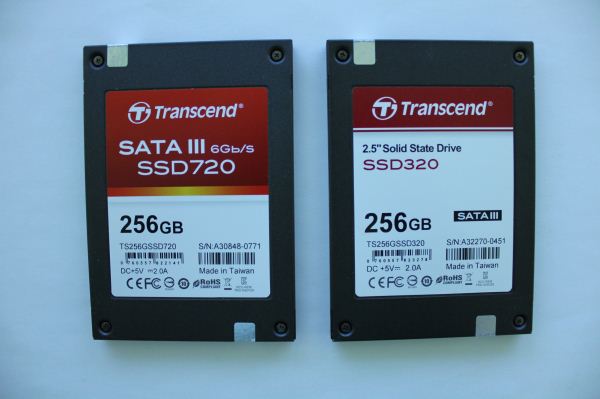
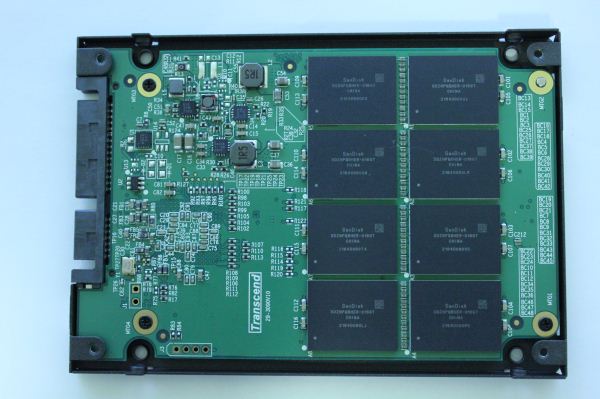

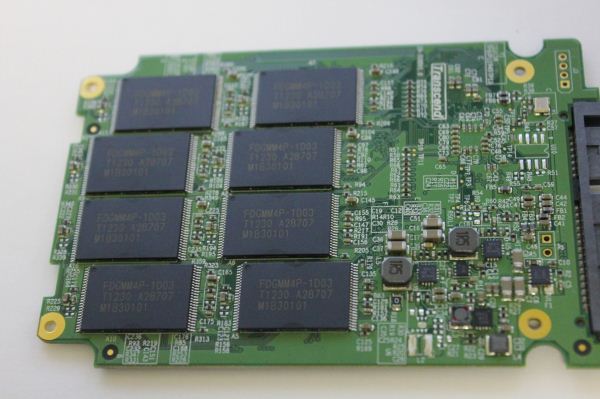
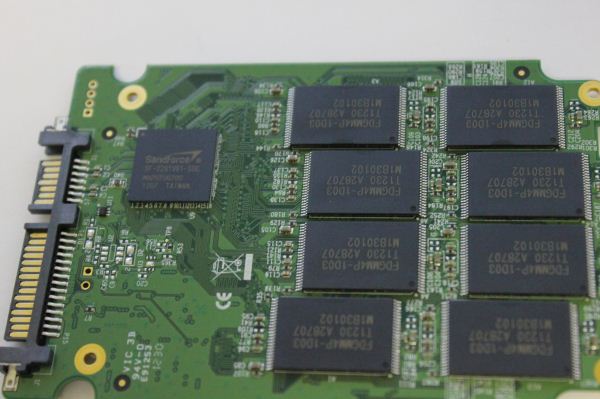

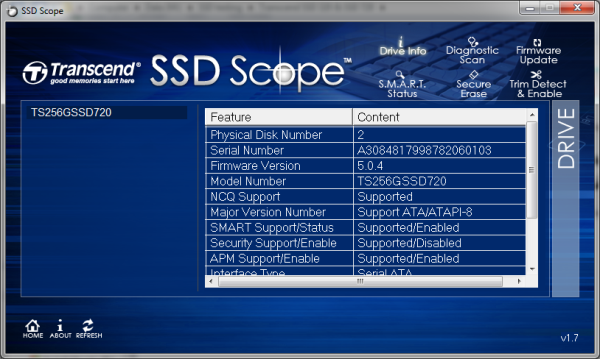








34 Comments
View All Comments
Beenthere - Saturday, January 26, 2013 - link
Many enthusiasts base their PC hardware purchases strictly on synthetic benches, which is laughable when many folks have no clue the benches are not necessarily accurate or representative of the actual performance of the hardware. It doesn't matter if it's an SSD, RAM, mobos, HDDs or other products, the benches can be very misleading.I defy anyone to accurately tell the difference in system performance in a blind test... between any popular SATA II and SATA III SSD, regardless of cost, when comparing the same size drives. The same goes for DRAM, I defy anyone to tell the difference in a blind test... between RAM running @ 1333 MHz. and @ 2000 MHz. in any Intel or AMD powered desktop PC. It's simply impossible to do though the uninformed will argue to their dying breathe but not actually run blind tests to prove it to themselves.
That being said, if you're willing to take a chance on lost data, regular firmware update requirements to fix issues, RMA's, etc. with an SSD, picking an SSD for most folks should be based on your needs, the SSD's reliability, compatibility, manufacturer reputation for warranty/service and price. FYI - Longer product warranties do not necessarily mean better quality drives be they SSDs or HDDs. You can completely forget benchmarks as they are for new, clean drives and mean nothing in the real world nor is the difference in system performance even discernible.
If you want a real good laugh - go to the major SSD maker websites and find the complete SSD warranty and read it carefully. Find out what your real cost/inconvenience/losses are if the SSD has a defect/fails. It ain't pretty... in many cases.
jason_mcallister - Sunday, January 27, 2013 - link
I really like your post and completely agree with your statements. I find it curious that more folks don't also see things this way. I was gullible in paying a premium for my DDR3-2400. If I had done some research before the purchase I would have realized that it wasn't a performance increase that I would have ever noticed. People, in which I include myself, are always looking at the benchmarks (metric tests) and kind of shut off the critical thinking process. Thankfully, I'm a little wiser these days and have a better process for making purchase decisions.alkhrt - Sunday, January 27, 2013 - link
It's great to see the price /GB close to $1., but 1TB worth of SSD ~$1000, while 1TB HDD ~$70. I can't believe with no moving parts etc. that SSD's are 14x more expensive to produce. Still feel like I'm getting the shaft buying one.Scour - Saturday, February 16, 2013 - link
The funny thing: The 320 was one of the cheapest 256GB-SSD at the arrival, only some old OCZ (240GB Vertex/Agilty 2, 256GB Petrol) were cheaper.Now it´s more expensive than M5S, M4 Hyper X 3k, Intel 335. OK, most SF-SSDs only offers 240GB, but for example the 335 ist about 14€ cheaper.
So I see no reason to buy a Transcend 320, my first choice in this class is the Plextor